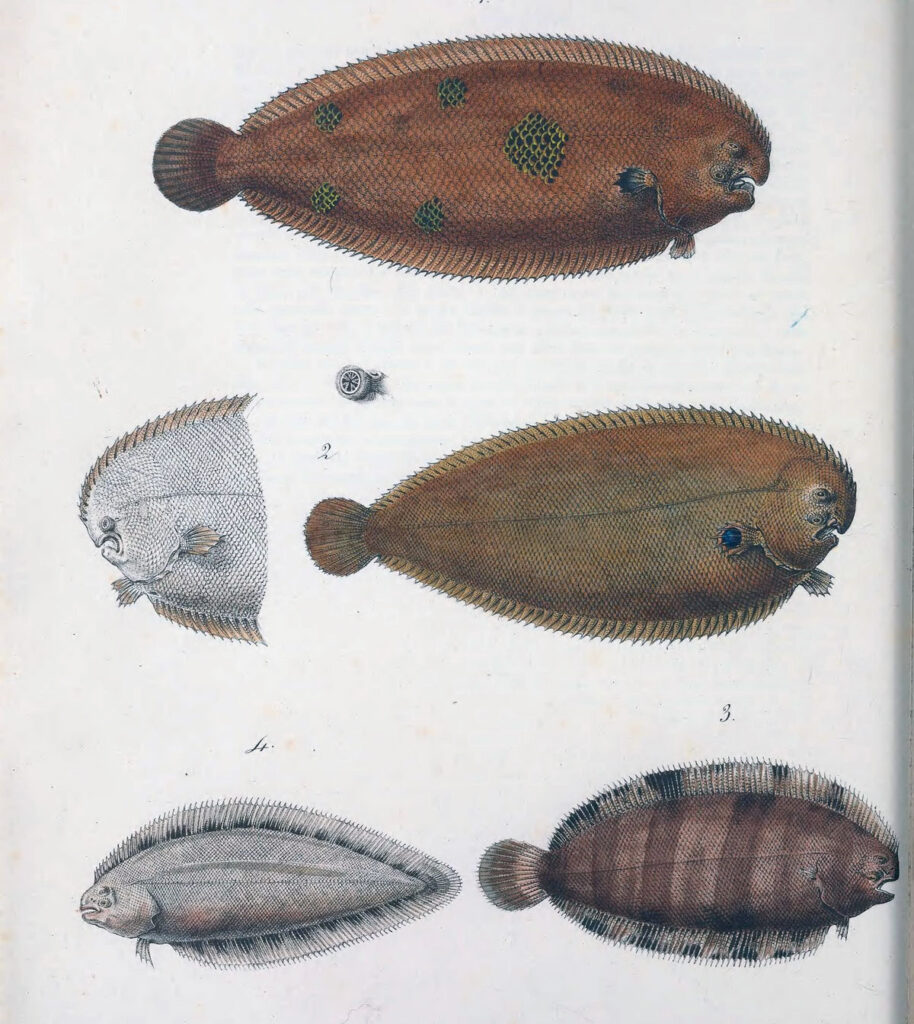
Last updated: 10 May, 2025 @ 12:11
Similar in appearance to the sought-after Dover sole, the sand sole is a species which is often overlooked by consumers – and that’s a shame, as it’s a fine fish.
Paler in colour, and often cheaper than its illustrious relative the Dover, the sand sole is caught mainly off the south west of Britain, with its distribution somewhat localised.
This means the sand sole is never a guaranteed catch, and any appearance on your fishmonger’s slab should be met with excitement, quickly followed by a purchase.
Sand sole: Identification
The fish possesses a couple of helpful distinguishing features which make it fairly easy to identify in amongst its flatfish friends.
The first is a distinctive black mark on the fish’s pectoral fin. It also has an unusual nostril on its underside.
However, ask your fishmonger to show it to you, as opposed to rummaging around their fish counter flipping fish and making a mess.
You may also spot that the sand sole has a noticeably smaller tail than that of a Dover sole or even a dab.

Sand sole: Test your knowledge
You can test your new found sand sole knowledge by identifying which fish in the below image is indeed a sand sole.
Your prize? Immense satisfaction and a ‘I’m impressed’ nod from your fishmonger next time you see them.
(The correct answer can be found at the bottom of the page)

Sand sole: Preparation
In terms of taste, the sand sole is very similar to that of the Dover – and at normally around half the price.
The skin of a sand sole is rough, much like a cat’s tongue. Therefore, it’s best to skin the fish in the same manner as you would a Dover sole.
The legend that is Mr Rick Stein uses a touch of sea salt when skinning his soles – which is a highly useful tip.
If you’re not intending to skin the underside of the fish, then it’s definitely a good idea to remove the tiny scales.
Sand sole: Cooking instructions
Once skinned, baste with a little melted butter, sprinkle with some salt and pepper and place under a raging grill.
Baste with a little more melted butter three or four more times as the fish is cooking and you’ll be rewarded with a fish that not only tastes superb, but looks great too.
Cooking times will of course depend on the size of the fish, and the heat of your grill – but for a fish of around 350g in weight you’re looking at about six to eight minutes without the need to turn the fish.
Once cooked, cover and leave the fish to rest for a couple of minutes.
Give it a final drizzle of melted butter and serve with simply boiled potatoes seasoned with sea salt and a good whack of black pepper, some green beans – and a super-chilled glass of muscadet.
(Sand sole knowledge quiz answer: Fish number two – but you knew that!)